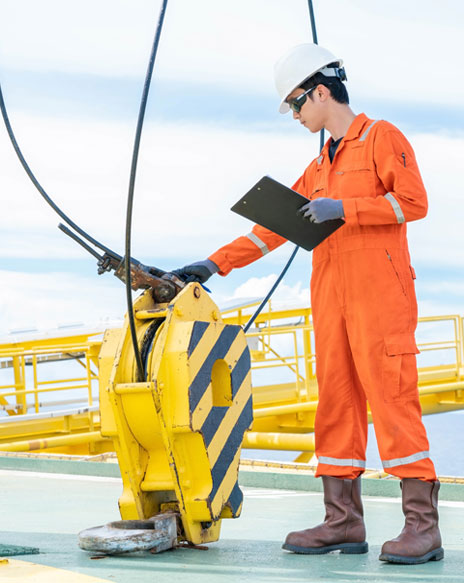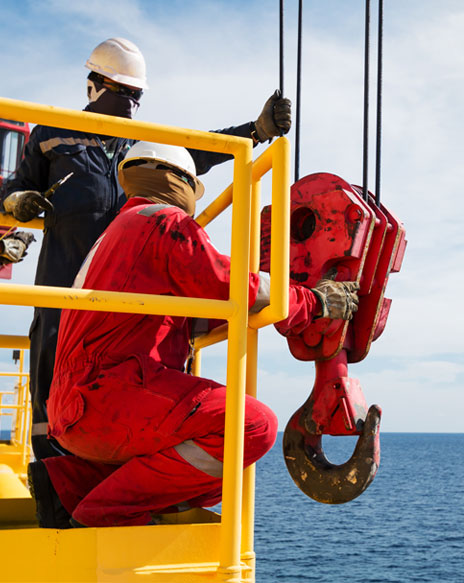Lifting Gear Inspection
Safe and successful lifting operations depend, in large part, on the continued safety of the lifting equipment and accessories that are used. Failures in this kind of equipment can result in significant or even fatal injuries. Health and safety law therefore places a number of specific obligations on those providing, controlling and using lifting equipment to properly manage these risks. Lifting Gear Inspections are therefore put in place to identify and rectify any such potential hazards.
Techmar carry out Periodic inspections on our customers cranes and lifting equipment, this usually includes but is not limited to the Drilling Equipment, Crane Pedestal, BOP Overhead Cranes, General Lifting Equipment, lifeboats Davits and life raft systems, and all other aspects of lifting equipment.
At our customers request we also carry out load testing, our engineers are qualified to perform and witness all aspects of load testing and NDT work scopes.
All equipment inspected is entered into Techmar database conforming to, and in accordance with LOLER. Techmar database will also produce certificates and reports online as and when required by our customers.
Techmar LGI Engineers are experienced if the lifting equipment field, and undergo in house training; competency assessments are also reviewed to ensure Techmar Lifting Engineers are aware and up to date with all relevant procedures and standards.

Lifting Gear Inspections
Unless there is an ‘examination scheme’ specifying other intervals, thorough examinations should be conducted every:
- 6 months, for lifting equipment and any associated accessories used to lift people.
- 6 months, for all lifting accessories.
- 12 months, for all other lifting equipment
A thorough examination requires visual examination and functional checks and should be performed by a competent person.
For most common lifting equipment and accessories, there are industry standard procedures and criteria which a competent person would follow when undertaking thorough examinations and making judgements as to the continued safety of the equipment. Methods used include:
- Visual examination and functional checks.
- Measurements of wear.
- (in some cases) traditional NDT (non-destructive testing) and load testing.

